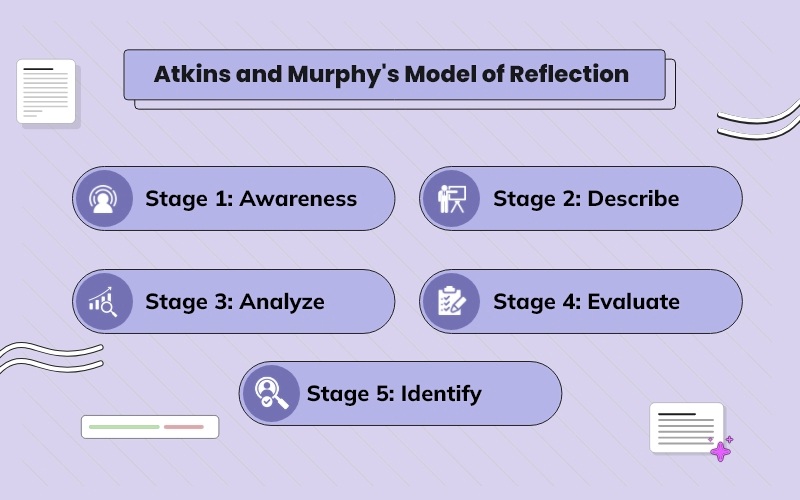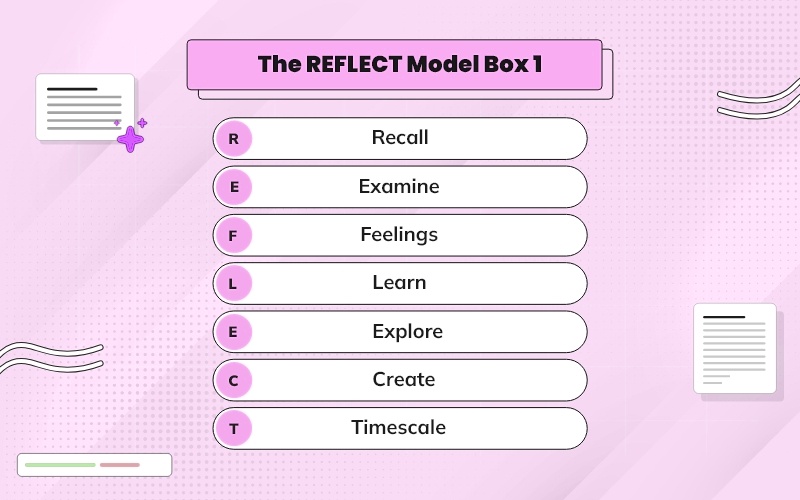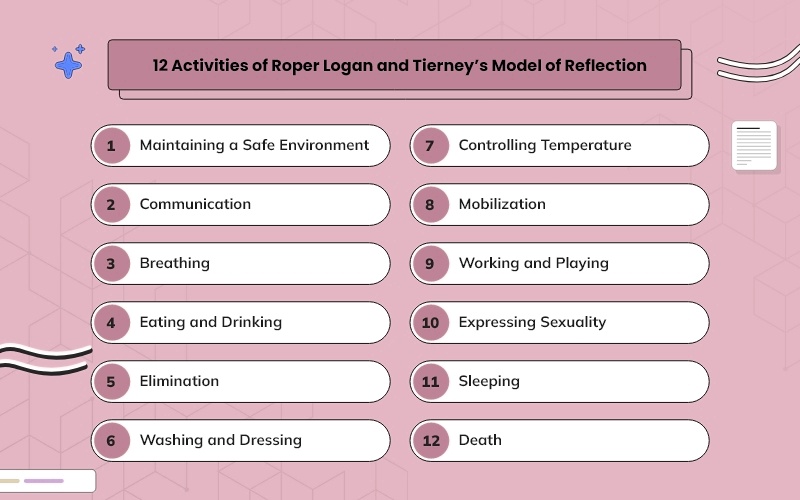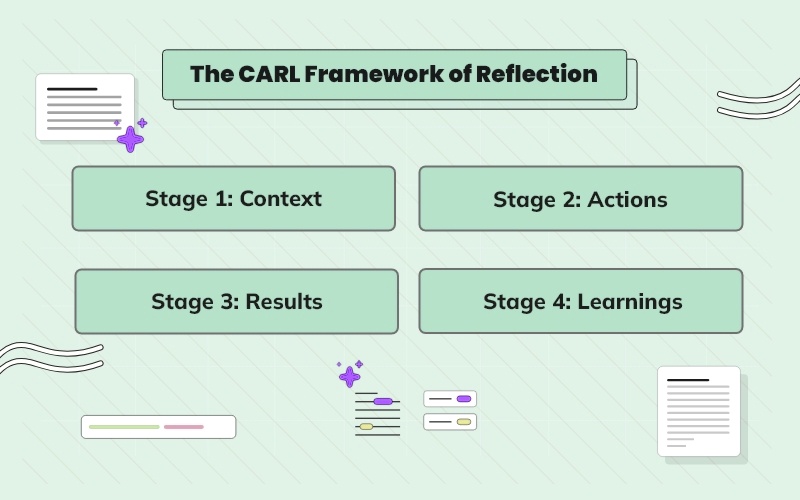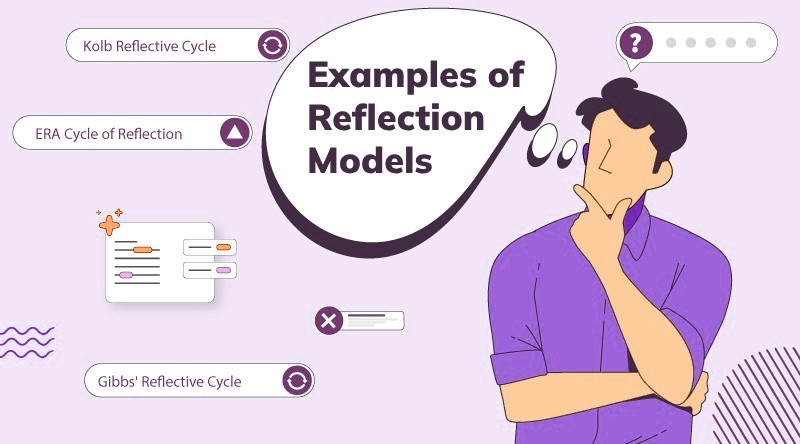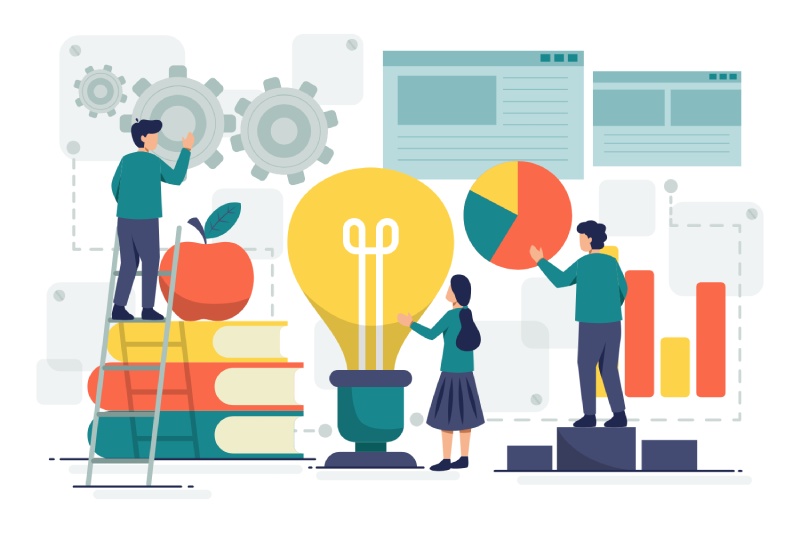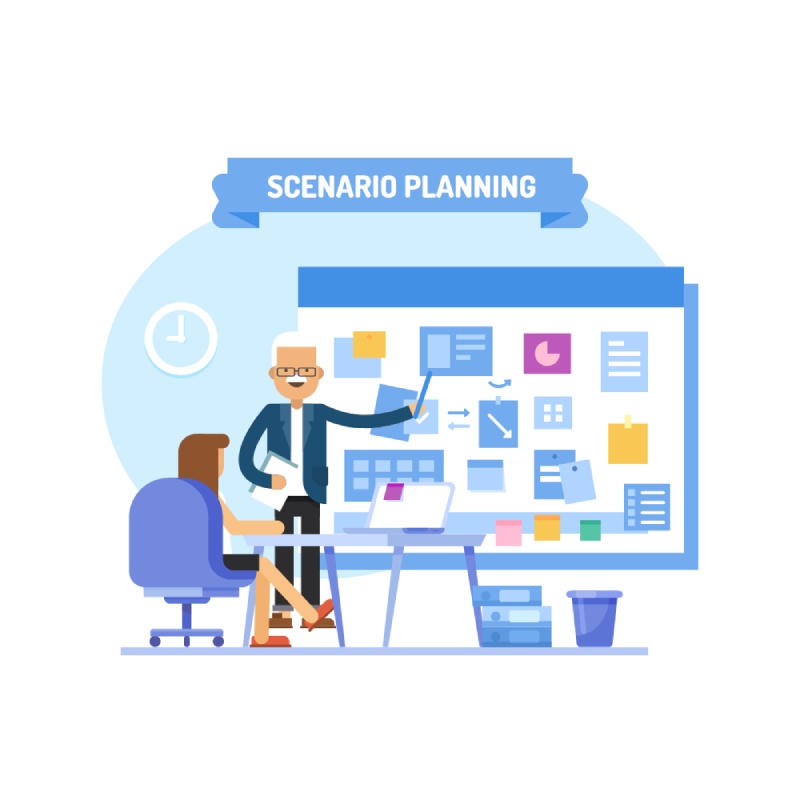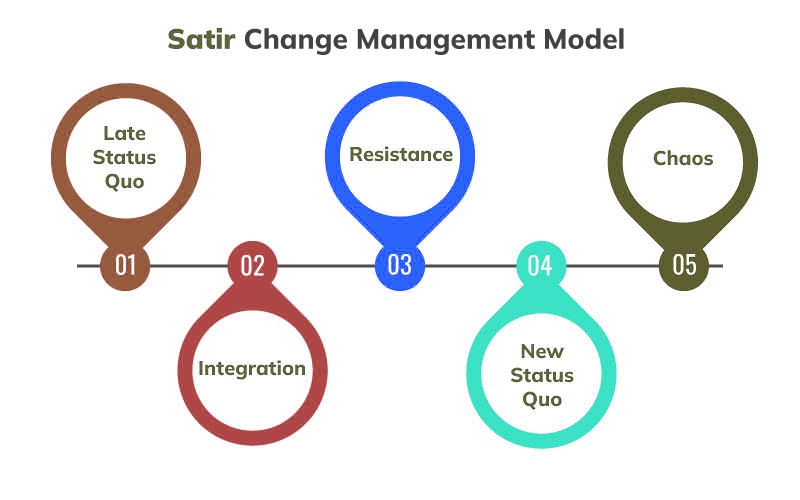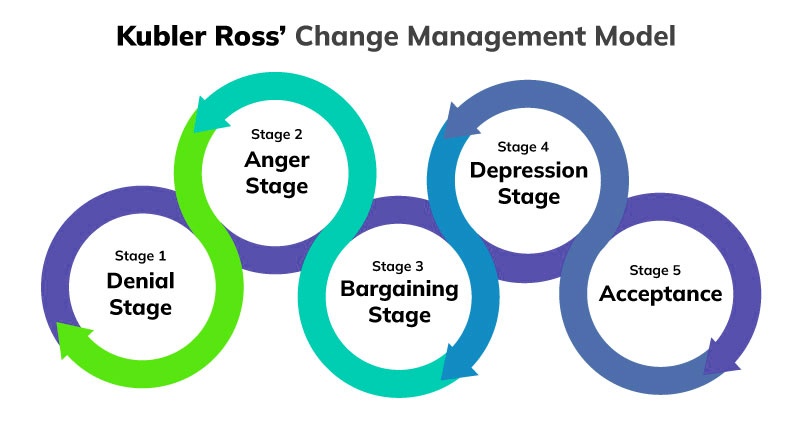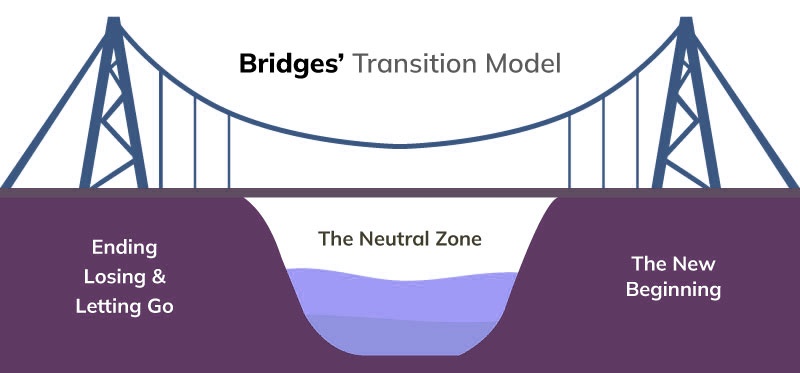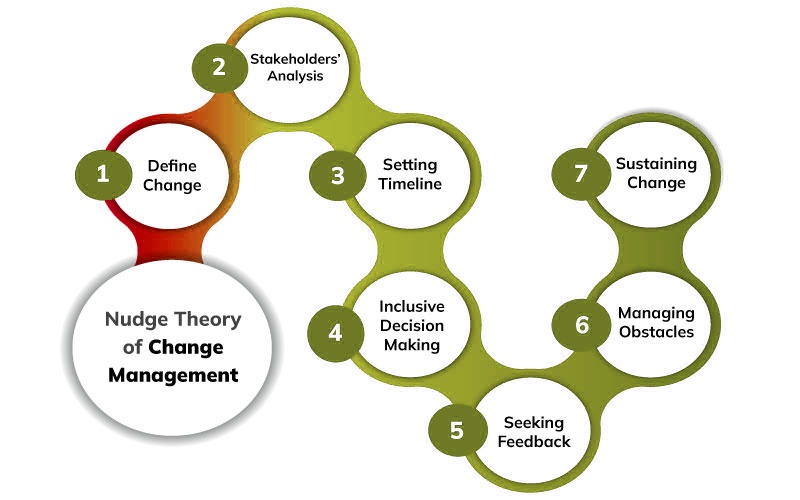Overview
In 1993, both the senior lecturers of Oxford Brookes University published a literature review of all the existing models and reflective practices. This highlighted that different authors that have developed their own reflective practices are quite similar and the only difference lies in the terminologies they have used.
Table of Contents
This theory of reflection given by Atkins and Murphy is based on the practice of reflecting on your work and then mindfully analyzing decisions to better your future actions.
Additionally, it states that once you experience something it is natural that you would reflect on it. In these cases, this model allows you to think through that experience, examine your feelings, and better your future actions.
Exactly a year later, Atkins and Murphy 1994 developed a framework for the reflective practice process. Both of the authors stated, "Despite the differences in terminology and detail within these authors' accounts of reflective processes, key stages can be identified from their writings. Although the stages are in reality integrated, it is useful to disentangle them and represent them in a clinical way.”
Five stages of Atkins and Murphy's model of reflection
Further, Sue Atkins and Kathy Murphy divided their reflective practice into 5 crucial stages mentioned below.
Stage 1: Awareness
According to Atkins and Murphy, the very first step in every reflective practice is to gain enough knowledge about one’s triggers and the factors that could have caused the discomfort they are experiencing. This can be achieved by conducting an effective SWOT analysis of an individual. In the cases of positive reflection, one might want to gain self-awareness in terms of identifying ways of producing similar results. Hence, the authors state that self-awareness in terms of feelings and thoughts is really essential for individuals working on reflective practice, and the questions for the same are mentioned below
- Which occurrences had a major effect on your emotions?
In this, you will highlight the different aspects that impacted your emotions in one way or the other. - What were you thinking at the time of the situation?
While answering this question, you will focus on expressing the thoughts you had during that period of time. - What exactly were your feelings right after the situation occurred?
After describing your thoughts during the situation, you will highlight the feelings you felt right after the situation or experience you are reflecting upon is ended. - What are your feelings right now about the situation you are reflecting upon?
Lastly, you will highlight the feelings you are feeling right now while you are reflecting on your situation in the past.
Stage 2: Describe
After gaining effective knowledge of self-awareness, The next stage of the model focuses on describing the event in detail to understand the context of the situation you are reflecting upon. In this step, the individuals need to critically analyze the situation and every key event that occurred in the situation. Once all the details are critically described in an efficient manner, you will be able to analyze and evaluate the situation more effectively, which is crucial for some other future steps of the model. Some essential questions are
- What, where, when, and why did things happen the way they did?
After describing your feelings, the next step is to give the details of the event you are reflecting upon. The details can include the location, event description, time of the event occurrence and reason behind the occurrence of the event can be included. - What was your contribution to the situation?
In this, you will highlight your actions that contributed to the situation. This section can cover both the positive and negative aspects of the event. - How other factors and elements were involved?
While answering this question, you will focus on highlighting the involvement of other factors or elements in the situation. This can include any sub situation or other people that were involved in the situation can be included while explaining this section.
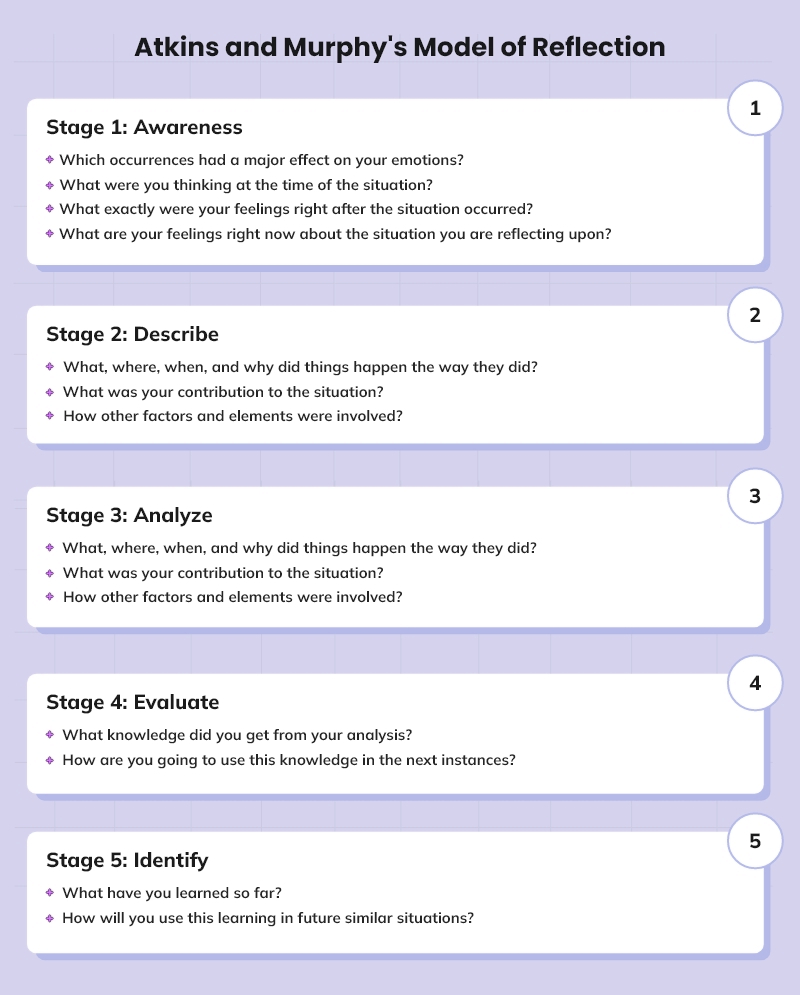
Stage 3: Analyze
In stage 3, an individual will analyze the assumptions made by them before they had the actual experience. After this, every assumption will be cross-countered. In addition to the cross-counter assumptions, individuals will also explore the alternatives of the participant in terms of the actions they took. Some assisting questions related to this stage of the framework are mentioned below.
- What were your previous assumptions about the situation?
In this, you will highlight the prior assumptions you had before the occurrence of the situation. - What was the actual reality of the situation?
After explaining the assumptions, you will highlight the reality of the situation you are reflecting upon. - What was the difference between your assumptions and reality?
After explaining both assumptions and reality, you will highlight the contrast between the two.
Stage 4: Evaluate
This stage of the model will focus on evaluating the knowledge you gained from the critical analysis of the situation. In this section, you will gradually evaluate whether the gained knowledge is helping you in problem-solving or solving the issue of your discomfort. Some assisting questions that might help you in effective reflective writing are
- What knowledge did you get from your analysis?
As this is the evaluation stage, you will highlight the knowledge you gained after conducting an evaluation of your feelings and event occurrence. - How are you going to use this knowledge in the next instances?
After effectively evaluating the situation, you will highlight the ways in which you can implement the knowledge gained from this experience’s evaluation and analysis.
Stage 5: Identify
The last but definitely not the least stage focused on the identification of key learnings that the individuals need to draw out to complete the process of reflection. Till now, you have effectively assessed all your emotions, situations, and knowledge meticulously. So, now by combining the insights gained from all four stages, you can critically draw out the learnings and the action plan to use that learning in an efficient way for future situations. Some assisting questions that can assist you with the same are mentioned below
- What have you learned so far?
In this, you will highlight the learnings you got from gaining effective knowledge of the situation. - How will you use this learning in future similar situations?
While answering this question, you will highlight the different ways in which you can apply your learnings from the situation to future similar situations.


